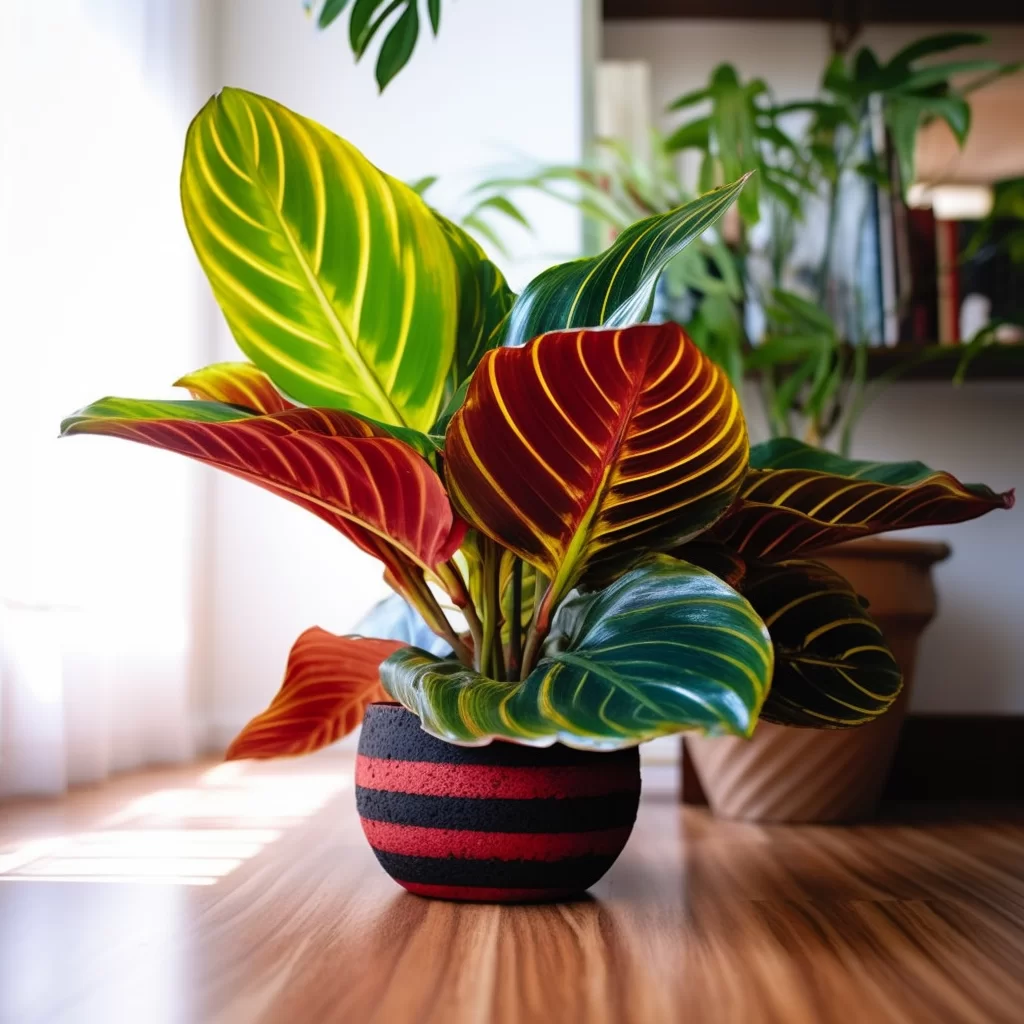Story of Day :
Contents
The Prayer Plant: A Complete Guide and Care Tips
Gardening enthusiasts, let’s talk about a plant that is a prayer in disguise- the prayer plant.
With its unique characteristics and gorgeous appearance, the Maranta Leuconeura belongs to the Marantaceae family.
Native to Brazil, this plant is famous worldwide for its colorful foliage with intricate patterns that almost look painted on.
Characteristics of Prayer Plant
The prayer plant has a fascinating characteristic known as nyctinasty- meaning it moves or folds up during nighttime and lowers its leaves during daytime.
It does so through an internal process called pulvinus cells that help control the movement in response to light changes.
The vibrant green leaves are oval-shaped with prominent veins running across them.
The leaf color varies from greenish-yellow to deep forest green with intricate white or pink markings on top of the foliage resembling painted brush strokes or feather-like patterns.

Care Tips for Prayer Plant
- Location: Choose a bright spot indoors but avoid direct sunlight as it may scorch the leaves.
You can place it near east-facing windowsills where indirect light falls on them.
- Temperature: Maintain temperatures between 60°F (15°C) – 80°F (27°C).
Avoid placing near cold drafts like open windows or air conditioning vents because they may stunt growth and cause damage to your plants’ health over time.
- Watering:The prayer plant loves high humidity levels so ensure moist soil at all times but not waterlogged soil that can lead to root rotting problems; water once every week regularly while living in hotter areas might require more frequent watering schedules.. Also, misting occasionally will be beneficial for your plant.
- Soil: The prayer plant prefers well-draining, fertile soil with good organic matter.
You can use a mixture of peat moss, sand, and perlite to provide adequate drainage.
- Fertilizer: Use a balanced liquid fertilizer every two weeks during the growing season and once a month in winters when growth is slower.
Possible Issues
If not given proper care, your prayer plant may suffer from several problems like brown leaf tips or edges due to underwatering or overwatering; yellowing leaves caused by direct sunlight exposure or inadequate lighting conditions; loss of variegation in leaf patterns might be an indication that you need to change the lighting arrangements for plants and adjust humidity levels accordingly; root rot from standing water could also occur if not careful with watering schedules.
Propagation Techniques for Prayer Plant

The prayer plant can propagate through stem cuttings and division methods.
- Cuttings:To grow the cuttings- choose healthy stems with at least two leaves attached at nodes near their base.
Dip in rooting hormone powder and insert them into moist soil until they take root after a few weeks under warm temperature conditions (75°F -85°F).
Once rooted, move them into larger containers filled with potting mix containing peat moss mixed with other organic materials such as vermiculite or perlite..
- Division:To divide your matured plant- remove it from its container carefully without disturbing roots too much then separate stems gently using clean scissors while keeping each section intact while repotting back into fresh soil mixtures according to needs.
In Conclusion,
Prayer plants are fascinating indoor plants that demand little attention and care but provide a stunning display of their beautiful foliage.
With these simple tips and techniques, you can easily cultivate them and propagate to share with your friends or grow more for yourself.